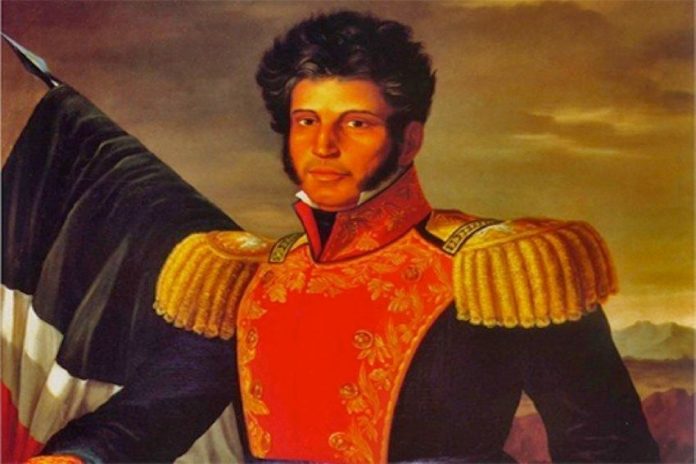In the narrative of abolitionism in the United States, northern destinations figure prominently: slaves in the American South followed the North Star on the Underground Railroad to the free states of the northern U.S. and Canada, for example.
Yet a new book holds that there was also an overlooked but important movement south — to Mexico, which abolished slavery decades before the U.S.
History professor Alice Baumgartner of the University of Southern California makes this case in South to Freedom: Runaway Slaves to Mexico and the Road to the Civil War. The book shares the individual accounts and wider narrative of enslaved Black people who crossed the border into Mexico. Baumgartner also shows the political dynamics that affected the narrative, including the history of abolitionism in Mexico and its hostile responses in the U.S.
In Baumgartner’s opinion, American hostility toward Mexican abolitionism helped cause the Texas Revolution and the Mexican-American War, and ultimately the American Civil War.
Although the number of slaves who fled northward is much larger, Baumgartner estimates that 3,000–5,000 people escaped to Mexico during the period of the book, which extends from the era of New Spain to the French intervention.
“I think it’s very conservative,” Baumgartner said of the figure she cites.
Slaves in U.S. states along the north-south border, such as Virginia or Maryland, would typically go north, whereas slaves in Louisiana and Texas would look southward.
In these latter states, Baumgartner said, “Canada was quite far. Going to Mexico was quite easier.”
Baumgartner came across the topic in the summer of 2012 while doing research into a separate issue in northern Mexico. She found documents reporting that slaveholders from the United States were entering Mexico to kidnap fugitive slaves and bring them back across the border — and that Mexican authorities tried to prevent such raids.
The discovery of this history sparked what Baumgartner describes as her nonstop efforts over the next eight years, efforts that culminated with the book.
“It took pretty much every waking moment between then and now,” she said.

Regarding studies of the topic, Baumgartner found few precedents. Rosalie Schwartz’s book Across the Rio to Freedom: U.S. Negroes in Mexico was a rare exception. Baumgartner did research in Texas, Louisiana and Mexico while learning more about escaped slaves who found refuge south of the border.
Some not only made the journey safely but were protected by their new fellow citizens.
In 1852, a fugitive slave in northern Mexico was kidnapped by a slaveholder, but four townspeople confronted and killed the kidnapper. Other accounts did not end so successfully, including for Jean Antoine, a slave who stowed away on a ship bound for Veracruz. After he was discovered on board, the ship returned to its point of origin, New Orleans, where Jean Antoine stabbed himself instead of going back to slavery.
Slaves in the U.S. learned about their abolitionist neighbor to the south in several ways, including Mexican laborers working in the area and already-escaped slaves in Mexico who returned to the States to free family members. One example of the latter was a man who settled in Coahuila and went back north to free his brother.
In Mexico, slaves generally gravitated toward one of two opportunities, Baumgartner says: they could live in a military colony on the northern border, built to protect Mexico from U.S. aggression and raids by Native Americans or they could enter the labor force.
“Both had a certain risk,” Baumgartner notes. “Obviously, enslaved people who joined the military colonies had to risk their lives in military duties.” But their counterparts in the labor force faced a cash-poor economy and adverse employment practices such as indentured servitude. However, their adopted country allowed these formerly enslaved people “to have land and an opportunity for citizenship in a very straightforward way.”
She describes freedom for escaped slaves in Mexico as similar to that in the northern states of the U.S. In Mexico, she says, escaped slaves could “engage in a measure of political participation that was unheard-of in the U.S.”
These opportunities existed because of Mexican abolitionism, which Baumgartner describes as a post-independence means of distancing the new nation from Spain and its slave traders and conquistadors.
“Newly independent Mexico was inspired by liberal rhetoric of equality for all,” Baumgartner said. “It was cast in a very different mold, distinguishing Mexico from Spain. [It was] an important reason for the early surge of antislavery in Mexico.”
Mexico’s president Vicente Guerrero was a descendant of African slaves. Between 1824 and 1827, over half of all Mexican states had either abolished slavery outright or established gradual emancipation laws, and it was abolished nationwide in 1837 after Texas, Mexico’s northern colony that held slaves, broke away in 1836.
Abolitionism had put Mexico at odds with Texas.
Anglo settlers had brought their slaves with them, classifying them as indentured servants to circumvent Mexican laws. Baumgartner lists tensions over slavery as a reason for the Texas Revolution. She also sees the Mexican nationwide ban on slavery as stemming from its defeat by Texas.

“Mexico was unable to stop Texas from declaring independence,” she said. “Half of its territory was stolen from them. They were able to forge victory from defeat by ending slavery, to show they were morally upright in a way the slaveholding U.S. was not.”
With Texas joining the United States as a slave state, American presidential administrations continually sought to negotiate a treaty with Mexico that would extradite fugitive slaves. Throughout the 1840s and 1850s, the Mexican government repeatedly refused.
Predating these demands from Washington was the U.S. invasion that led to the Mexican-American War. Slaveholders envisioned it as a way to spread slavery into newly conquered territory, but the United States government eventually held that it could not establish slavery where it had been already prohibited under Mexican law. It was a victory for abolitionists — but a source of resentment for slaveholders as tensions simmered and the U.S. approached the American Civil War.
Baumgartner described the Civil War as “one of the most American conflicts” in her nation’s history.
“I’m not surprised that people are skeptical of the idea of a neighboring country having such a profound effect on that national conflict. It took me a long time to recognize that myself,” she said.
The contemporaneous crises of the Civil War and the French intervention upended longstanding policies. The U.S. finally abolished slavery — first in rebellious southern states with the Emancipation Proclamation, then throughout the country with the 13th Amendment. Following the end of the Civil War, defeated Confederates were welcomed to Mexico by the emperor Maximilian, who was criticized for allegedly wishing to reintroduce slavery.
Ultimately, he was toppled and executed under president Benito Juárez in 1867. By then, the end of slavery was confirmed in both Mexico and the United States.
As for the descendants of escaped slaves, Baumgartner says that some continue to live in cohesive communities, such as El Nacimiento in Coahuila, whereas others are more dispersed nationwide.
“Fugitive slaves who got jobs in Mexico tended to [live in] much less concentrated communities,” Baumgartner said. “Their descendants are much harder to trace. Nacimiento is the place where those descendants are still present. They still have a lot of oral traditions and oral histories.”
Rich Tenorio is a frequent contributor to Mexico News Daily.
